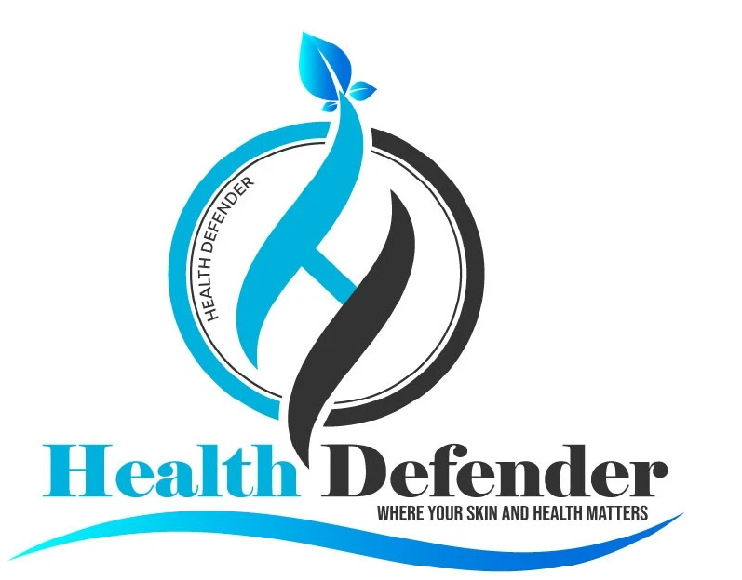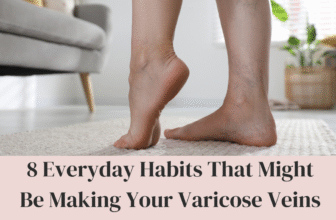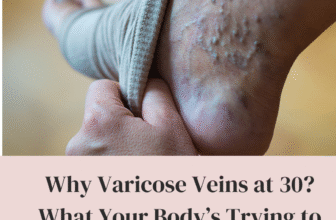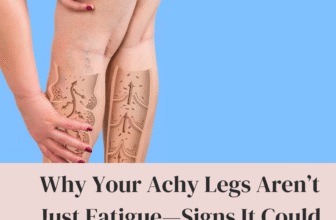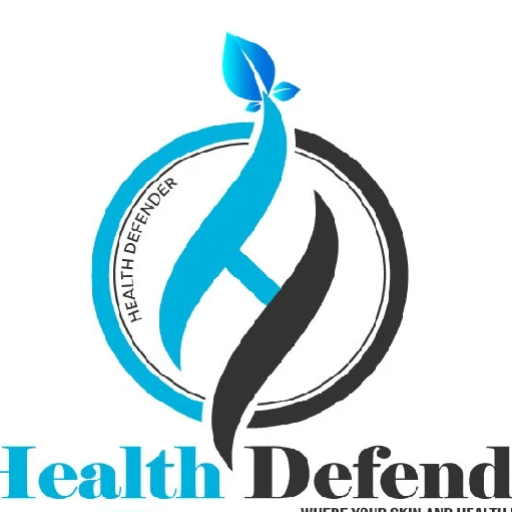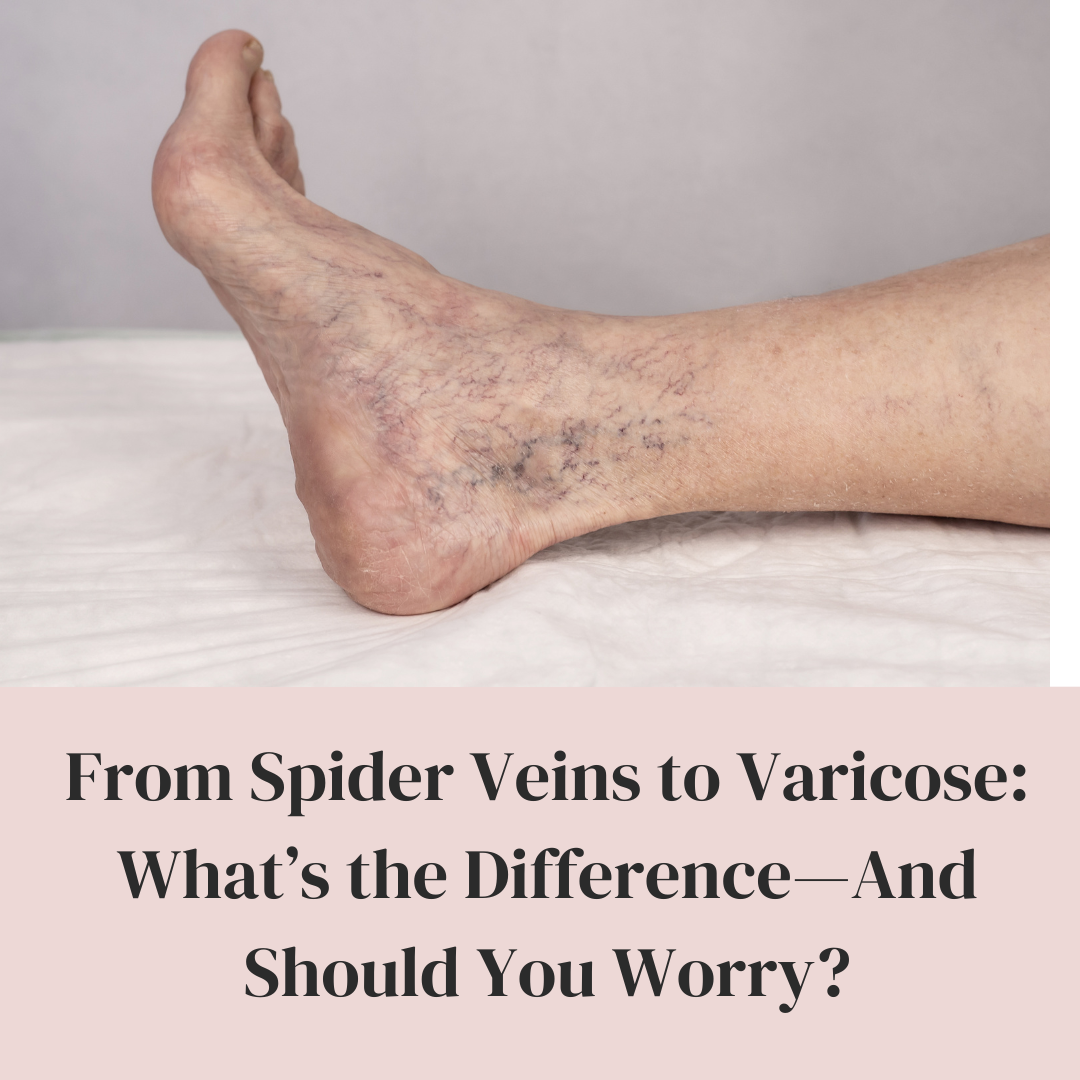
They start small—tiny, squiggly lines on your thighs or ankles. You notice them when you’re changing clothes, maybe under harsh bathroom lighting. At first, it’s easy to brush them off—just spider veins, no big deal.
Until one day… those faint lines become bulging ropes. Your legs ache a little more than usual. You sit down to rest, but the pressure doesn’t ease up. And suddenly, you’re wondering: Is this just cosmetic… or something more serious?
You’re not being dramatic. You’re being human. And your questions are valid.
Because there’s a line between spider veins and varicose veins—and crossing it isn’t always obvious. But here’s the thing: understanding the difference can be the game-changer that helps you manage the discomfort and stop things from getting worse.
Let’s break it all down—without the medical jargon or judgment.
Editors Pick: Best supplement for Varicose veins
First, What Are Spider Veins?
Think of spider veins as the surface-level whisper. They’re thin, red or purple lines that look like spider webs—hence the name. They live just under the skin and usually show up on the legs or face.
They don’t bulge. They don’t hurt (most of the time). But they can still mess with your confidence, especially when they multiply like weeds overnight.
What causes them? A mix of things:
- Genetics
- Standing or sitting too long
- Hormonal shifts (hello, pregnancy or menopause)
- Age (because time comes for us all)
You might not feel them, but you see them. And if you’re like many people, you’ve probably Googled, “How to hide spider veins fast.” Been there.
Then Come the Varicose Veins
Now we’re talking about the deeper layers. Varicose veins are twisted, enlarged, and usually a bit angry-looking. They’re dark blue or purple, they bulge out of the skin, and—unlike spider veins—they don’t stay silent.
They throb. They itch. They feel heavy. Sometimes they even cramp or burn, especially after a long day.
You might be thinking:
“Why did mine go from tiny lines to full-blown veins overnight?”
It doesn’t really happen overnight—it builds. Unfortunately, spider veins can be the warning signs that your circulation is under pressure. When vein valves weaken, blood pools instead of flowing efficiently. That pressure builds… and boom—varicose veins.
So… Should You Be Worried?
That depends on two things: how your veins feel and how they’re affecting your life.
Spider veins? Mostly cosmetic. Unless they start itching or bleeding, they don’t usually signal deeper trouble. But varicose veins? That’s another story.
These can lead to complications like:
- Chronic leg swelling
- Skin discoloration or ulcers
- Blood clots (yep, that’s serious)
- Pain that interferes with walking or sleep
So if your veins are causing discomfort, changing appearance, or don’t feel right, don’t ignore that nudge. Your body is talking—you have to listen.
“I Don’t Even Know Where to Start…”
That quiet panic? You’re not alone.
“Do I need surgery?”
“Is there anything I can do now without going to the doctor immediately?”
The truth is, you have options. And below is a lowdown of what you can do.
1. Move More (Even If It’s Just a Little)
Take hourly breaks to walk or stretch. Calf raises are your new best buddy.
2. Let Gravity Work With You
Lift your legs, not against you. Prop your feet up after work. It’s not lazy—it’s smart.
3. Wear Compression Stockings
Not the prettiest, but incredibly helpful. They boost circulation and can ease swelling.
4. Watch the Heels and Tight Clothes
High heels and skinny jeans? Cute, but circulation killers. Opt for comfort when you can.
5. Support from Within
Some supplements—like Diosmin, Horse Chestnut, or Vitamin C—may help tone vein walls and reduce inflammation. (Always check with your doctor, though.)
When to See a Specialist
If your veins are painful, if they’ve changed suddenly, or if you’re seeing swelling or discoloration, you don’t have to “wait and see.”
A vein specialist can use an ultrasound to check what’s going on below the surface. The good news? Treatments today are usually non-invasive and quick. No hospital gowns. No long recoveries. Just relief.
Let’s Talk Confidence for a Second
It’s not just about pain or health risks. Let’s be honest—varicose veins can make you feel self-conscious.
Wearing shorts, going swimming, feeling confident in a dress—it all feels harder when your legs don’t “look right.” And that frustration is valid.
But your worth is not tied to your veins. And your options are bigger than “hide it or fix it.”
You can support reduce symptoms by supporting your body, and still feel good in your skin, even while you heal.
Final Thoughts
Spider veins and varicose veins are like two versions of the same thing, but they tell different stories on what’s going on inside. One whispers. The other shouts. And both deserve to be heard.
So don’t wait until the pain or embarrassment gets louder than your voice.
Start small. Move more. Ask questions. And if your body’s asking for help—listen.
What’s your body been trying to tell you lately?
